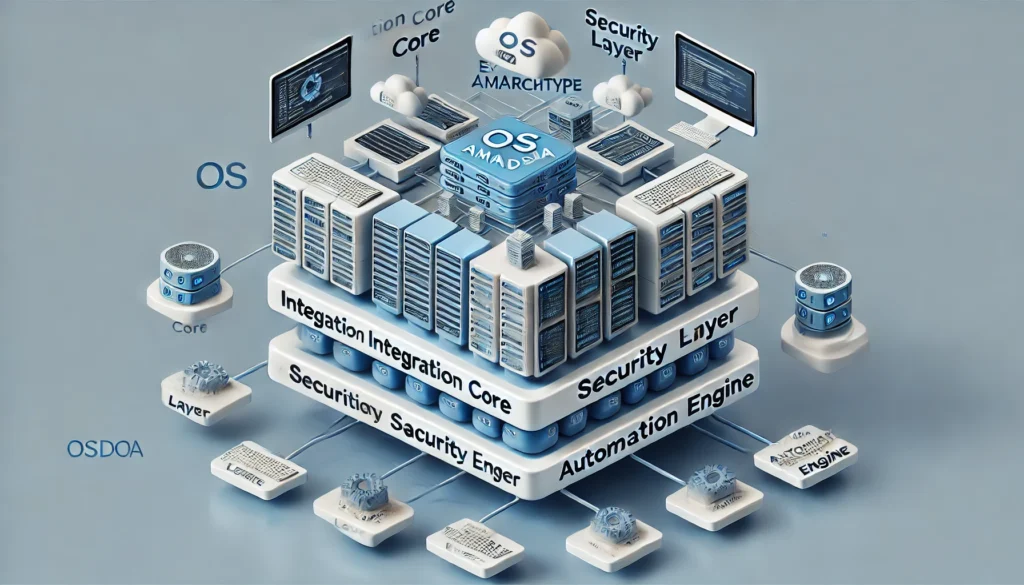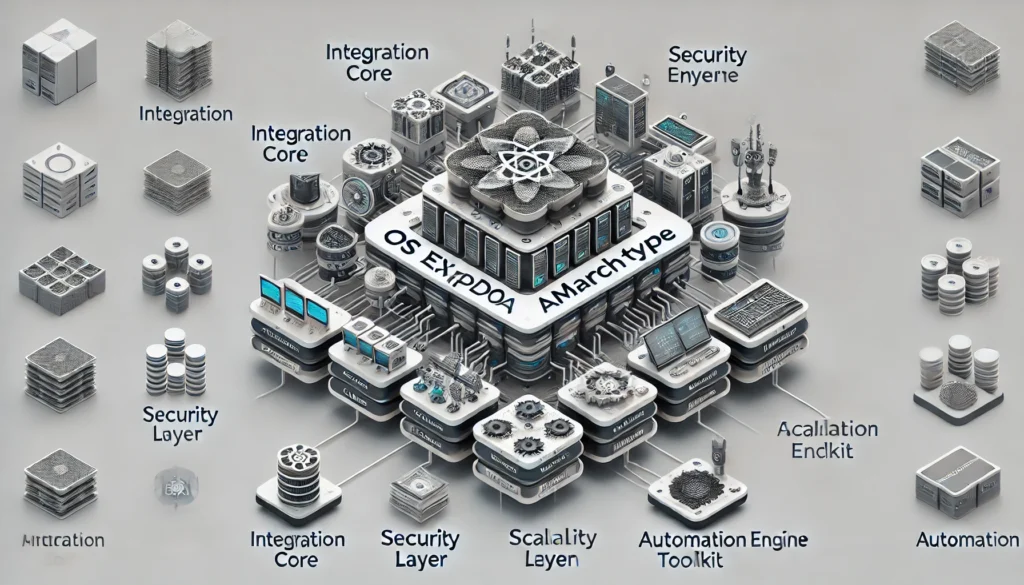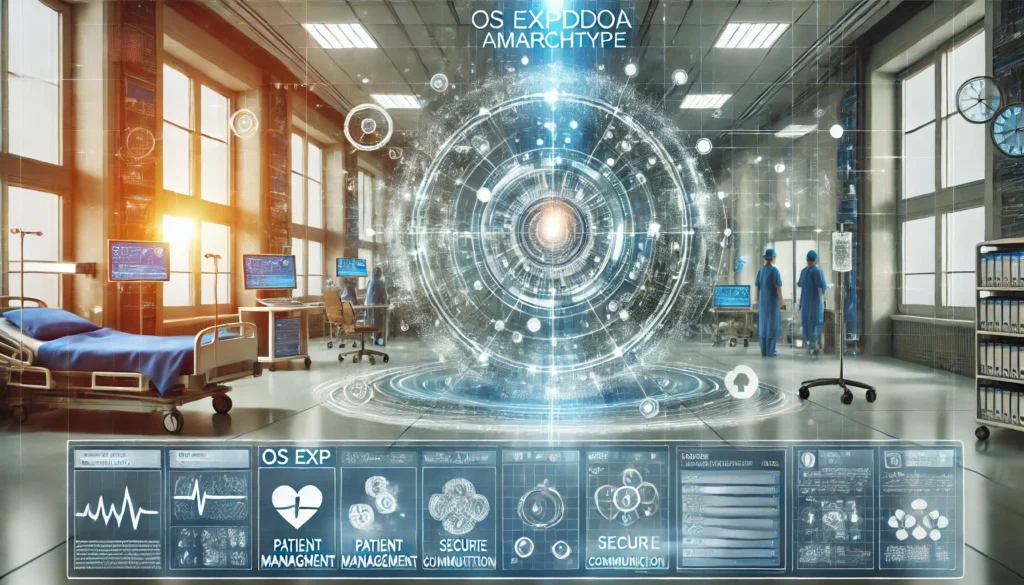OS Expdoa Amarchtype: Comprehensive Guide to Modern Software Architecture

Introduction
The field of software development is constantly evolving, and frameworks like the OS Expdoa Amarchtype are leading the way. This innovative architecture empowers businesses to create scalable, secure, and user-friendly systems. By focusing on flexibility, modularity, and automation, OS Expdoa Amarchtype is reshaping how technology solutions are built and implemented. In this comprehensive guide, we will explore its core principles, technical aspects, applications, and benefits to give you an in-depth understanding of this revolutionary framework.
Historical Background
Evolution of Software Architectures
Software development has transitioned through various phases, starting from monolithic systems to service-oriented and microservices architectures. OS Expdoa Amarchtype emerged as a response to the growing need for adaptable and scalable systems that seamlessly integrate diverse technologies.
Key Milestones in Development
OS Expdoa Amarchtype was born out of the collaboration between software engineers and system architects who recognized the limitations of traditional models. Over time, it evolved to incorporate automation, continuous delivery, and user-centric design as its foundational principles.
Core Principles of OS Expdoa Amarchtype
Modularity
This principle ensures that the system is divided into smaller, self-contained components, making it easier to develop, test, and scale individual modules without disrupting the entire system.
Interoperability
Systems built using OS Expdoa Amarchtype are designed to integrate seamlessly with various platforms, enabling better communication and data sharing across environments.
Automation
Automation is at the heart of this framework, reducing manual intervention in repetitive tasks and accelerating development cycles.
Continuous Integration and Delivery
Frequent updates and integrations help identify issues early in the development process, ensuring smoother deployments and higher-quality software.
User-Centric Design
A focus on user needs ensures that the final product delivers a seamless and intuitive experience, increasing user satisfaction and engagement.
Technical Architecture
The architecture of OS Expdoa Amarchtype is built around several key components:
| Component | Functionality |
|---|---|
| Integration Core | Manages data flow and communication between modules. |
| Security Layer | Ensures robust protection against cyber threats. |
| Scalability Engine | Facilitates horizontal and vertical scaling. |
| Automation Toolkit | Streamlines repetitive tasks to save time and resources. |
Implementation Strategies
Planning and Assessment
A thorough assessment of business needs is the first step to successful implementation. This involves identifying the system’s goals and determining the tools and technologies to be used.
Iterative Development
OS Expdoa Amarchtype emphasizes iterative cycles where small changes are implemented, tested, and refined before moving on to the next phase.
Continuous Feedback
Collecting and integrating feedback from stakeholders helps refine the system, ensuring it meets the desired objectives effectively.
Industry Applications
Healthcare
In healthcare, this framework helps build patient-centric systems that improve data management and care delivery.
Finance
OS Expdoa Amarchtype supports secure and efficient financial solutions that comply with industry regulations while providing a smooth user experience.
Retail
Retailers leverage this architecture to create responsive inventory systems and enhance customer experience.
Benefits
Flexibility and Adaptability
The modular design allows organizations to respond quickly to market demands without overhauling the entire system.
Faster Time to Market
Continuous integration and delivery reduce the time taken to deploy new features, giving businesses a competitive edge.
Challenges
While OS Expdoa Amarchtype offers many benefits, it comes with challenges like the initial learning curve and the complexity of managing multiple components. However, with proper planning and skilled teams, these challenges can be effectively mitigated.
Future Trends
The future of OS Expdoa Amarchtype lies in its integration with artificial intelligence, machine learning, and blockchain. These technologies will enhance its capabilities, making it even more valuable for modern enterprises.
Conclusion
The OS Expdoa Amarchtype is more than just a framework; it’s a transformative approach to building software systems. By focusing on modularity, automation, and user-centric design, it addresses the challenges of modern software development. As businesses continue to evolve, adopting this architecture can provide a significant edge in delivering scalable and efficient solutions.
FAQs
What tools are commonly used with OS Expdoa Amarchtype?
Tools like Docker, Kubernetes, and Jenkins are often employed to support modularity and automation in this framework.
How does this architecture enhance security?
It incorporates robust security measures, including encryption and continuous monitoring, to safeguard data and systems.
Is OS Expdoa Amarchtype suitable for small businesses?
Yes, its modularity and scalability make it an excellent choice for businesses of all sizes.
What industries benefit the most from this framework?
While healthcare, finance, and retail are leading adopters, any industry requiring scalable and efficient systems can benefit.
How can I learn to implement this architecture?
There are various online courses, tutorials, and certifications available that focus on OS Expdoa Amarchtype principles and implementation.
What is the difference between OS Expdoa Amarchtype and traditional microservices architecture?
While both focus on modularity and scalability, OS Expdoa Amarchtype emphasizes seamless integration, advanced automation, and a stronger emphasis on user-centric design. It also incorporates more modern tools for continuous delivery and feedback loops.
Can OS Expdoa Amarchtype be integrated with legacy systems?
Yes, OS Expdoa Amarchtype supports interoperability, making it possible to integrate with existing legacy systems. This can be achieved through middleware solutions and APIs designed for compatibility.
What skills are required to work with OS Expdoa Amarchtype?
Developers need proficiency in programming languages like Python or Java, familiarity with tools such as Docker and Kubernetes, and knowledge of automation and CI/CD processes.
How does OS Expdoa Amarchtype handle system downtime during updates?
The framework supports rolling updates and blue-green deployment strategies, minimizing downtime by deploying updates incrementally or in parallel with the live system.
Are there specific metrics to measure the success of OS Expdoa Amarchtype implementation?
Yes, key performance indicators (KPIs) such as deployment frequency, mean time to recovery (MTTR), system scalability, and user satisfaction are commonly used to measure its success.
Recommended Articles:
Understanding and Troubleshooting Unknown St_Fence_History
Tecnovldrio.com.mx: Leading Glass And Aluminum Solutions For Construction
Flicknest.guru: Watch HD Movies Anytime, Anywhere | Comprehensive Guide
111-356 Jointer: Comprehensive Guide for Precision Woodworking
OS Expdoa Amarchtype: Comprehensive Guide to Modern Software Architecture











